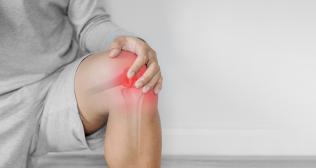
What is Rheumatic Musculoskeletal Disease How to identify them
Rheumatic musculoskeletal diseases (RMDs) impose a significant burden on individuals and healthcare systems worldwide. In India, studies indicate that musculoskeletal pain is one of the most reported ailments, with conditions like rheumatoid arthritis (RA), osteoarthritis (OA), and spondyloarthritis affecting a substantial portion of the population.
Globally, approximately 1.71 billion people suffer from musculoskeletal conditions, making them the leading contributor to disability. These diseases limit mobility, reduce quality of life, and increase the risk of other health complications. The Global Burden of Disease Study 2019 highlights occupational risks, tobacco use, and high body mass index as major contributing factors.
Despite their widespread impact, RMDs often receive less attention in national health programs, emphasizing the need for better awareness, early diagnosis, and improved treatment strategies. Would you like to explore specific interventions to reduce the burden of RMDs?
Who is most affected.
Rheumatic musculoskeletal diseases (RMDs) affect people across different age groups, but certain demographics are more vulnerable:
Age Group: The prevalence of RMDs increases with age, particularly affecting individuals above 50 years. However, conditions like juvenile idiopathic arthritis can also impact children.
Gender Differences: Studies indicate that women are more frequently affected by conditions such as rheumatoid arthritis (RA) and systemic lupus erythematosus (SLE), while men are more prone to ankylosing spondylitis.
These disparities highlight the need for gender-specific approaches in diagnosis and treatment. Would you like to explore preventive strategies for high-risk groups?
Is It a Genetic Disease—
Genetics play a significant role in rheumatic musculoskeletal diseases (RMDs), influencing susceptibility, disease progression, and treatment response.
Here’s how:
Genetic Predisposition: Certain genes increase the likelihood of developing RMDs. For example, HLA-DRB1 is strongly linked to rheumatoid arthritis (RA), while HLA-B27 is associated with ankylosing spondylitis.
Gene-Environment Interactions: Genetic predisposition alone does not cause RMDs. Environmental factors like infections, smoking, and stress can trigger disease onset in genetically susceptible individuals.
Personalized Medicine: Advances in genetic research are paving the way for targeted therapies. Understanding genetic markers helps doctors tailor treatments for better outcomes
WHAT ARE THE COMMON RHEUMATIC MUSCKULOSKELETAL DISEASE HOW TO IDENTIFY THEM
Rheumatic musculoskeletal diseases affect joints, muscles, bones, and connective tissues. Some of the most common ones include:
Osteoarthritis (OA): A degenerative joint disease caused by cartilage breakdown, leading to pain, stiffness, and reduced mobility.
Rheumatoid Arthritis (RA): An autoimmune condition where the immune system attacks joint linings, causing inflammation, swelling, and joint deformities.
Lupus: A systemic autoimmune disease that can affect joints, skin, kidneys, and other organs, often causing fatigue, joint pain, and skin rashes.
Ankylosing Spondylitis: A type of arthritis that primarily affects the spine, leading to stiffness and reduced flexibility.
Gout: A condition caused by uric acid build-up, leading to sudden and severe joint pain, often in the big toe.
Psoriatic Arthritis: A form of arthritis linked to psoriasis, causing joint pain, swelling, and skin symptoms.
Fibromyalgia: A disorder characterized by widespread musculoskeletal pain, fatigue, and sleep disturbances.
How to Identify Them:
A. Joint Pain & Stiffness: Persistent pain, especially in the morning or after inactivity.
B. Swelling & Redness: Inflamed joints may appear swollen, warm, or red.
C. Fatigue: Many rheumatic diseases cause chronic tiredness.
D. Limited Mobility: Difficulty moving joints or performing daily activities.
E. Skin & Systemic Symptoms: Conditions like lupus and psoriatic arthritis may cause rashes or organ involvement.
Rheumatology in India bridging the gaps in India
Rheumatology in India faces several challenges, including limited access to specialized care, a shortage of trained rheumatologists, and delays in implementing research findings into clinical practice. Bridging these gaps is crucial to improving patient outcomes.
One approach to addressing these challenges is hybrid implementation effectiveness studies, which integrate research findings with practical applications to speed up the adoption of proven treatments2. These studies help ensure that patients benefit from the latest advancements without the usual delays in clinical implementation.
Additionally, organizations like the Indian Rheumatology Association play a vital role in supporting rheumatologists, promoting research, and enhancing patient care. Expanding training programs, increasing awareness, and improving healthcare infrastructure are key steps toward closing the gap in rheumatology care in India.
What will patient care look like in 10 years?
In the next decade, patient care in rheumatology in India is expected to undergo significant advancements:
A. Precision Medicine: Treatments will be tailored to individual patients based on genetic, proteomic, and metabolomic data, leading to more effective and personalized therapies.
B. Telemedicine & AI Integration: Digital health platforms and AI-driven diagnostics will enable remote consultations, reducing hospital visits while improving early detection and treatment accuracy.
C. Advanced Therapies: Innovations such as Chimeric Antigen Receptor T-cell (CAR-T) therapy and vagus nerve stimulation (VNS) for autoimmune diseases will become more accessible, offering new hope for patients.
D. Expanded Awareness & Training: Organizations like the Indian Rheumatology Association will continue to enhance education and awareness, ensuring better access to specialized care.
Categories
Clear allMeet the doctor

- Rheumatology | Rheumatology
-
17 Years
-
1500

















